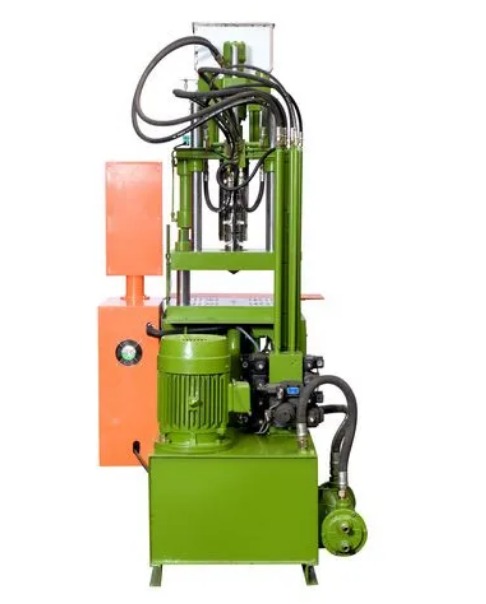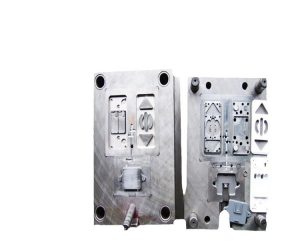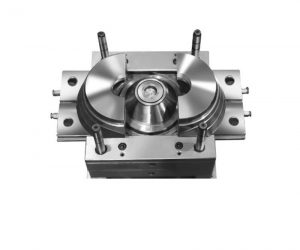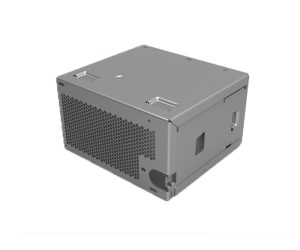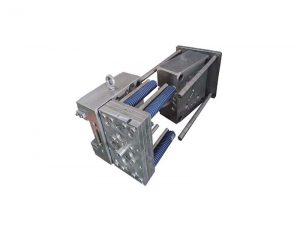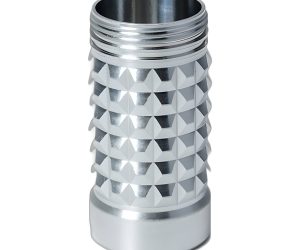The esoteric realm of thermoset injection molding finds its apotheosis in the ring plunger machine—a technological marvel defying the limitations inherent in conventional screw-based systems. This isn't merely an incremental improvement; it represents a paradigm shift in the processing of chemically cross-linking polymers. Forget the predictable predictability of thermoplastic extrusion; here, we delve into the chaotic elegance of irreversible chemical transformations.
The operational principle, while ostensibly similar to its screw-based counterparts, unveils a profound difference. The heart of the machine—the ring plunger—a piston-like annulus, orchestrates a controlled compression molding process. This isn't the gentle coaxing of thermoplastics; this is the forceful imposition of molecular architecture, a dance of pressure and heat culminating in the rigid, unforgiving structure of a thermoset.
The ring plunger's design, a seemingly simple cylindrical annulus, belies its sophisticated function. Its reciprocating motion within the heating barrel isn't a mere displacement; it's a precisely calibrated compression, a controlled explosion of molecular bonding. The material, fed via a hopper, isn't merely melted; it's subjected to a carefully orchestrated metamorphosis, a transformation from a viscous fluid to an intractable solid.
The implications for thermoset processing are transformative. Lower processing temperatures, a direct consequence of the compression molding process, mitigate thermal degradation, yielding parts of exceptional integrity. Cycle times plummet, a boon for high-volume manufacturing, as the rapid compression and injection minimize dwell time within the barrel. The resultant part quality transcends the capabilities of conventional systems; tolerances shrink, consistency reigns supreme, and the specter of defects recedes.
The applications are as diverse as they are demanding. From the intricate circuitry of high-performance electronics to the robust components of automotive engineering, the ring plunger machine delivers. Heat resistance, dimensional stability, and chemical inertness—hallmarks of thermosets—are amplified by the precision of this technology.
Yet, this technological triumph isn't without its nuances. The selection of a ring plunger system requires a nuanced understanding of thermoset rheology and the specific demands of the application. Manufacturers must carefully consider the material's cross-linking kinetics, the desired part geometry, and the production volume. A miscalculation can lead to catastrophic failure; a masterful application, however, unlocks a world of previously unattainable precision and efficiency.
In conclusion, the ring plunger injection molding machine isn't merely a tool; it's a testament to the power of controlled chaos, a precision instrument capable of harnessing the unpredictable nature of thermosetting polymers to produce parts of unparalleled quality and performance. Its adoption signifies a bold step forward in the ongoing evolution of plastics processing technology.
this guide will tell you all about injection molding machine ring plungers They're super important parts of the injection molding system
So what exactly is a ring plunger Well, when you're making plastic parts, molten plastic gets pushed into a mold to cool and harden The ring plunger sits in the middle and makes sure each part is the right size and quality every single time
Making these plungers needs to be precise They have to handle intense heat and pressure and be tough enough to avoid wear and tear The shape and size are super important for consistent results
And remember to take care of your ring plunger Regular cleaning and lubrication will keep it working great If you see any damage, replace it right away so you don't mess up your plastic parts
What is injection moulding machine ring plunger and how does it work?
Injection moulding machine ring plunger, also known as non-return valve or check ring, is a one-way valve that is located at the tip of the screw or plunger in the injection system. Its main function is to seal the molten plastic in the injection chamber and prevent it from flowing back over the flights of the screw or plunger during injection.
The ring plunger consists of two parts: a ring and a seat. The ring is a cylindrical metal piece that fits snugly inside the barrel wall. The seat is a conical metal piece that is attached to the screw or plunger tip. The ring and the seat have matching surfaces that form a tight seal when they come into contact.
The ring plunger works in two stages: plasticizing and injection. During plasticizing, the screw or plunger rotates and pushes the molten plastic through the ring plunger by the metering flights. The ring moves backward during screw or plunger rotation and forward during injection. The back pressure set on the machine determines the pressure required to pump the plastic through the ring plunger and develop the appropriate shot size.
During injection, the screw or plunger moves forward and pushes the molten plastic into the mold cavity. As the screw or plunger starts moving forward, the ring plunger seat mates with the ring to make a seal and prevent any backflow of plastic. The pressure on the ring plunger can be very high, depending on the injection speed and pressure, as well as the part geometry and material properties.
What are the advantages and disadvantages of different types of ring plungers?
There are various types of ring plungers available in the market, such as sliding-ring, locking-ring, three-piece, four-piece, full-flow, ball-check, etc. Each type has its own advantages and disadvantages, depending on the design, material, application, and maintenance requirements.
Sliding-ring type: This type of ring plunger has a simple design that consists of a single ring that slides along the barrel wall. It does not rotate with the screw or plunger during plasticizing or screw recovery. It moves backward during screw or plunger rotation and forward during injection. This type of ring plunger has some advantages, such as:
- It has less frictional heat generation and wear than other types.
- It has less material hang-ups and intermittent malfunctioning than other types.
- It has better sealing performance than other types.
However, this type of ring plunger also has some disadvantages, such as:
- It requires more frequent cleaning and replacement than other types.
- It may not be suitable for high-speed or high-pressure applications.
- It may not be compatible with some materials that are sensitive to shear or degradation.
Locking-ring type: This type of ring plunger has a more complex design that consists of a ring that locks onto a groove on the screw or plunger tip. It rotates with the screw or plunger during plasticizing or screw recovery. It moves backward during screw or plunger rotation and forward during injection. This type of ring plunger has some advantages, such as:
- It has less cleaning and replacement frequency than other types.
- It can handle high-speed or high-pressure applications better than other types.
- It can work with a wider range of materials than other types.
However, this type of ring plunger also has some disadvantages, such as:
- It has more frictional heat generation and wear than other types.
- It may have more material hang-ups and intermittent malfunctioning than other types.
- It may have worse sealing performance than other types.
Other types: There are also other types of ring plungers that have different designs and features, such as three-piece, four-piece, full-flow, ball-check, etc. These types may have specific advantages and disadvantages, depending on the application and material. For example, a three-piece ring plunger has a separate ring, seat, and retainer that can be replaced individually, which may reduce the cost and downtime. A four-piece ring plunger has an additional spring that helps to keep the ring in contact with the seat, which may improve the sealing performance. A full-flow ring plunger has a larger opening that allows more plastic to flow through, which may reduce the pressure drop and improve the melt quality. A ball-check ring plunger has a ball that acts as a valve to prevent backflow, which may simplify the design and operation.
How to choose the right ring plunger for your injection moulding machine and application?
Choosing the right ring plunger for your injection moulding machine and application is not a simple task. There are many factors to consider, such as:
- The type and size of your injection moulding machine and injection system.
- The type and properties of your plastic material and additives.
- The design and requirements of your molded part and mold.
- The processing conditions and parameters of your injection molding process.
Some general guidelines for choosing the right ring plunger are:
- Choose a ring plunger that matches the diameter of your screw or plunger tip.
- Choose a ring plunger that is compatible with your plastic material and additives. For example, avoid using a sliding-ring type for glass-filled or abrasive materials, or a locking-ring type for shear-sensitive or degradable materials.
- Choose a ring plunger that can handle the injection speed and pressure of your application. For example, use a locking-ring type for high-speed or high-pressure applications, or a full-flow type for low-pressure applications.
- Choose a ring plunger that can provide consistent shot size and quality for your molded part and mold. For example, use a sliding-ring type for thin-walled or precision parts, or a four-piece type for parts that require better sealing performance.
How to maintain and troubleshoot your ring plunger to avoid common problems and extend its service life?
Maintaining and troubleshooting your ring plunger is essential to ensure optimal performance and avoid common problems, such as:
- Shot size variation or inconsistency.
- Cushion variation or inconsistency.
- Melt leakage or drooling at the nozzle.
- Melt degradation or discoloration.
- Short shots or flash defects.
Some general tips for maintaining and troubleshooting your ring plunger are:
- Clean your ring plunger regularly to remove any dirt, dust, or residue that may affect its function or cause wear. Use a soft brush or cloth to wipe the ring and seat surfaces gently. Avoid using any abrasive or corrosive materials that may damage the metal surfaces.
- Replace your ring plunger when it shows signs of wear or damage, such as cracks, chips, scratches, grooves, or deformation. Check the fit and alignment of the ring and seat surfaces before installing the new ring plunger. Use a torque wrench to tighten the screws or bolts according to the manufacturer's specifications.
- Adjust your processing conditions and parameters to suit your ring plunger type and application. For example, use lower back pressure for sliding-ring types, higher back pressure for locking-ring types, lower injection speed for full-flow types, higher injection speed for ball-check types, etc.
- Monitor your shot size and cushion values regularly to detect any changes or deviations that may indicate a problem with your ring plunger function or seal. Use a digital caliper or micrometer to measure the screw or plunger position before and after injection. Compare the values with the set values on the machine controller. If there is any difference, check your ring plunger for any wear or damage, or adjust your processing conditions or parameters accordingly.
By following these tips, you can choose, use, maintain, and troubleshoot your injection moulding machine ring plunger effectively and efficiently. This will help you improve your injection molding process quality and productivity, as well as reduce your cost and downtime.
